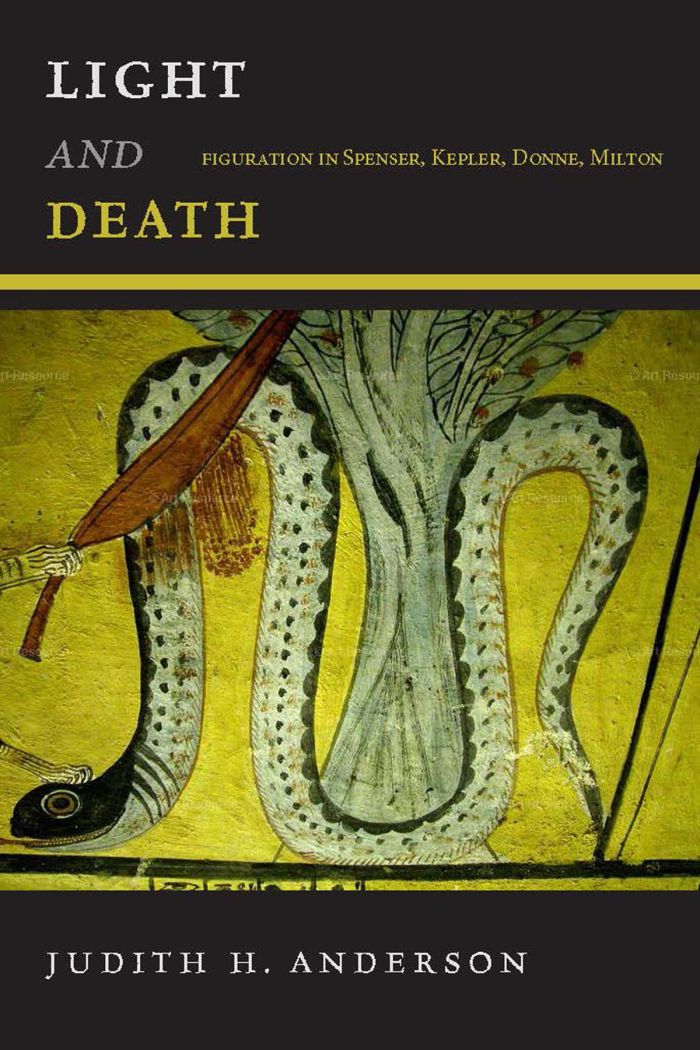Light and Death
Figuration in Spenser, Kepler, Donne, Milton

This book can be opened with

Light figures being; darkness, death. Bridging mathematical science, semantics, rhetoric, grammar, and major poems, Judith H. Anderson seeks to negotiate writings from multiple disciplines in the shared terms of poiesis and figuration rather than as cultural opposites.
Analogy, a type of metaphor, has always been the connector of the known to the unknown, the sensible to the infinite. Anderson’s study moves from the figuration of light and death to the history of analogy and its pertinence to light in physics and metaphysics, from Kepler to Donne, Spenser, and Milton. Topics proliferate: creativity, optics, the relation of literature to science, the methodology of thought and argument, and the processes of narrative, discovery, and interpretation.
Analogy, 'the connector of the known to the unknown,' is given in-depth exploration in this fascinating study of life and death, darkness and light, language and meaning; a learned, richly textured study that contributes immeasurably to early modern studies.——Regina M. Schwartz, Professor of English, Northwestern University
This fascinating book is above all a contribution to the history of early modern science that helps an ongoing critical process of revisionism by showing how both scientific and poetic thought use analogy in similar ways. It is also fascinating in its unusual structure: it allows us access to Anderson’s subtle critical mind in the process of building interpretations.——Leah Marcus, Vanderbilt University
This book's meditative, cogitating, interallusive form demonstrates what Anderson herself explicates in the early modern authors she knows and reads so well: form is being, and style creates.—Spenser Review
Anderson's major contribution lies in her invitation to take seriously the implications of analogy’s philosophical roots in the study of early modern figuration.—Modern Language Review
Close reading is Anderson's signal virtue as a critic, and her brand of it is delightfully permissive, tracking structures of texts, the reader's experiences, etymological history, literary theory, and social contexts.—Sixteenth Century Journal
Introduction: Issues of Death, Light, and Analogy
1. “The Body of This Death”: Donne’s Sermons,
Spenser’s Maleger, Milton’s Sin and Death
2. Mutability and Mortality in The Faerie Queene
3. Satanic Ethos: Evil, Death, and Individuality in
Paradise Lost
4. Connecting the Cultural Dots: Classical to Modern
Traditions of Analogy
5. Proportional Thinking in Kepler’s Science of Light
6. Analogy, Proportion, and Death in Donne’s
Anniversaries
7. Milton’s Twilight Zone: Analogy, Light, and Darkness
in Paradise Lost
Acknowledgments
Notes
Index

